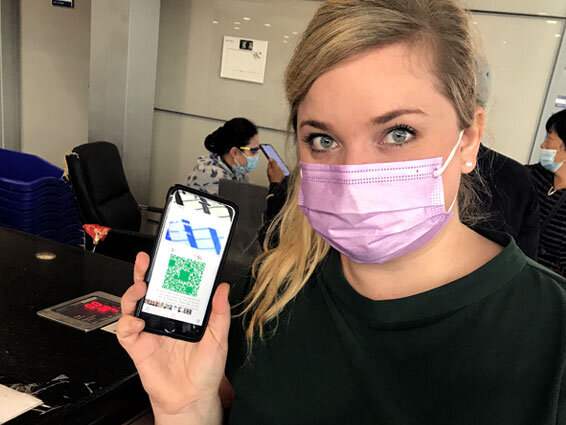China now: 600 million trips during coming week
By Line Heidenheim Juul
Despite the corona pandemic still raging on in several corners of the world, the original epicenter of the outbreak looks vastly different. Since the spring, more and more business and industries have been recovering, and domestic flight traffic is at index 98, almost back to the same level as last year this time.
During the national October holiday starting today, when the foundation of modern China is being celebrated, China´s largest booking platform Trip.com expect 600 million trips. Technology has played a deciding role in this development, and while it is not without its downsides, it is relevant to keep an eye on the Chinese model.
- Pudong International Airport will be bustling in the coming week. We visited Shanghai´s biggest airport ahead of the largest migration on earth in October.
The world looked-on in shock and awe when the images from a giant pool party in Wuhan flourished on the internet. This would not have happened without the blessing of the authorities and their confidence in the status of Wuhan today. However not everywhere in China has managed to reach this level, and there are still largely restrictions across western provinces such as Yunnan and Xinjiang, who both border up to neighboring countries. Despite these issues, this week hundreds of millions of people in China will be travelling, during the world’s largest migration.
China and corona today
For weeks, the new case count has been low and under 30 diagnosed patients. Today on Oct. 1st the new case count was 11, all incoming travelers. That is adding to the WHO total estimates of 91.000 cases in Mainland China with 4.700 deaths to date.
Skeptics has doubted the numbers reported from China and elsewhere, and while it can be reasonable to maintain a critical view on those, it is unfortunate to completely disregard the results and current sensible situation China is in.
Business is back, even in hospitality and travel. It is uncertain whether or when a second wave will hit China, but spikes in June proved that the government is ready to crack down hard and fast. There is good reason to keep an eye on the Chinese model, as it seemingly has worked.
How China cracked the code
So how did China crack it? The answer is simple: With health codes, mass testing and advanced temperature measurement or large groups of people. Within a few weeks of the first lockdowns, the big tech players like Alibaba’s Ant Financial and Tencent’s We Chat launched a solution. A QR code inside already existing payments apps to reveal the status of everyone based on tracking and other data points.
It was not without trial and error but launched quickly and widely adopted. The code was de-facto necessary, as no access to public transport, hospitals, restaurants or workspaces was allowed without it. Major offices, malls and train stations started using infrared technology to measure large amounts of people coming and going.
When Wuhan’s city government suggested to employ mass testing in the city of 11 million people, it did not go down without notice. Since then, major metropolises have done exactly the same, including the capital city, Beijing. Many of the high-powered technological solutions were employed widely, however there has also been many places where the manual registration and measuring has been adopted.
It is no secret that the amount of surveillance and tracking in China is far beyond what most Europeans are comfortable with. That, along with the governments vested interest and ties to the biggest tech players, have made China an object of criticism when it comes to human rights and other areas where surveillance can be used as a mean of negative control. This view on the methods employed in China more often take up column space and headlines in the media. It is a comfortable truth that we are used to hearing, and it can be shocking to see mass pool parties from Wuhan or pictures from the busy train stations and roads in China, where a population almost double the size of the US will travel these days.
What’s next?
From the Chinese perspective, the major challenge and battleground to move forward resides outside of the countries’ borders. As long as Covid-19 cases keep spiking in EU and the US, and a vaccine is not widely distributed, the outlook for international travel getting back to normal is bleak. Although China opened more up for foreign residents returning to China last month, the 14-day quarantine is still mandatory.
In China, prestigious and important trade fairs carry on. In Beijing, the first major auto show since the beginning of the pandemic was kicked off last weekend with mainly local participants flocking to the event, that signifies positive vibes for a suffering industry. It is also still expected that the prestigious import fair CIIE will be held in November.
Although it is unlikely that European leaders will copy China exactly, it is still valid to pay attention to and perhaps be inspired by the ways China has tried to crack the code to increasing mobility and stimulating the economy in corona-times.


